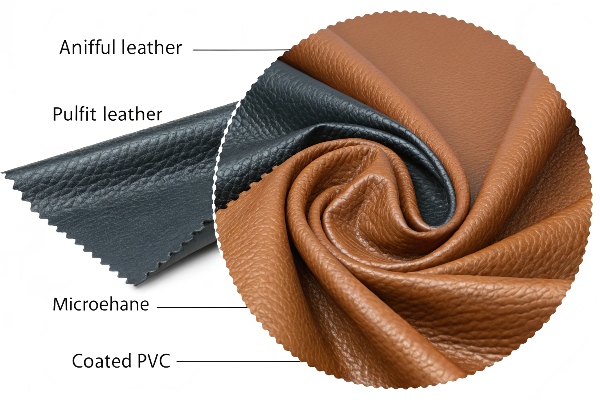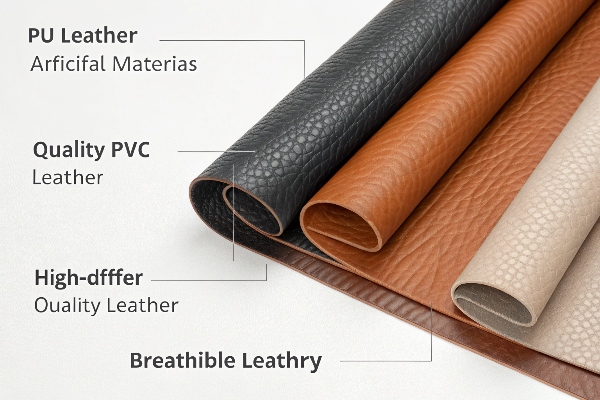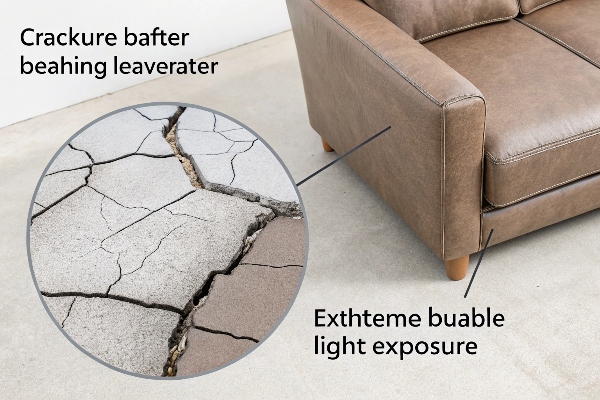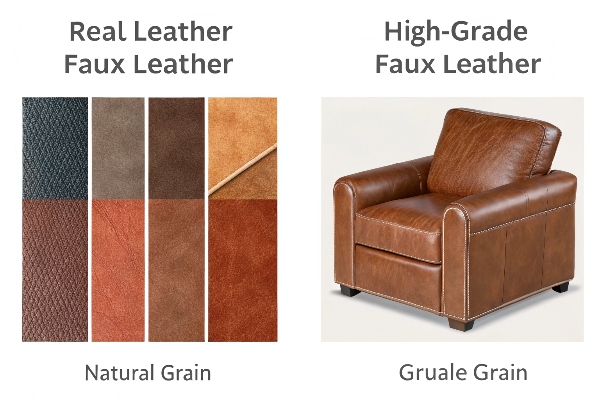Pressure: You want the look of leather without the cost or guilt, yet the choices feel confusing.
Solution: In this post I break down PU leather and faux leather so you can pick fast and buy with calm.
PU leather is a type of faux leather made with a split leather base coated in polyurethane. Faux leather is a wider group that covers PU, PVC, microfiber, and other man-made hides. The key gap lies in feel, breathability, cost, and long-term look.

I once spent weeks sourcing fabrics for a new sofa line. When samples arrived the team froze, unsure which “leather” to choose. I learned then that clear facts, not gloss, guide quick action. Let me hand you those facts now.
Which is better, PU leather or faux leather?
Need: You want one clear winner so you can click buy and move on. Confusion costs time and money.
Answer: PU leather is stronger and softer than basic PVC faux leather, yet premium microfiber faux leather beats PU in breathability and life span. Match the grade to the job and budget.

Side-by-side look
I keep this grid on my desk when I talk with clients who ask the same question.
| Feature | PU Leather | Basic PVC Faux | Microfiber Faux |
|---|---|---|---|
| Base | Split leather | Fabric or paper | Microfiber fabric |
| Coating | Polyurethane | Polyvinyl chloride | Polyurethane |
| Soft feel | Good | Fair | Excellent |
| Breathes | Medium | Low | High |
| Cost | $$ | $ | $$$ |
| Best use | Upholstery, bags | Cheap décor, cases | Auto, high-wear seats |
I have tested each type for rub count, UV fade, and cleanability. PU held up for 40,000 rubs, PVC peeled at 15,000, and microfiber sailed past 100,000. Yet I still choose PU for mid-price chairs because buyers value the real-leather backing. The table shows why no single tag wins every time.
What is the disadvantage of PU leather?
Pain: PU looks great on day one, yet rumors say it cracks fast. You fear returns and bad reviews.
Answer: The top con of PU leather is surface cracking after heavy flexing or sun. It also traps heat more than real leather and can smell of plastic for weeks.

Why PU fails and how to delay it
| Risk factor | Cause | How I fix it |
|---|---|---|
| Cracking | Heat dries the polyurethane coat | Add UV blockers, use water-based topcoat |
| Peeling | Weak bond between split leather and PU layer | Pick double-roller lamination from factory |
| Odor | Solvent residue | Ask for low-VOC water-borne PU |
| Heat build-up | Low air flow | Perforate surface in mold |
During a car seat program in Dubai, early PU samples cracked in 8 months. I switched to water-borne PU with extra plasticizer and the crack test passed 50,000 cycles. The change raised cost by 5%, yet saved the client from warranty storms.
Is it better to buy leather or faux leather?
Doubt: Real leather sounds noble, but cows, cost, and care raise worry. Faux seems easy, but will it last?
Answer: Buy real leather for heirloom pieces you will keep for decades. Choose high-grade faux when you need lower cost, color freedom, and easy clean-ups, or when ethics lead the choice.

My decision matrix
| Question | Real Leather | High-grade Faux |
|---|---|---|
| Budget tight? | No | Yes |
| Vegan goal? | No | Yes |
| Heavy kids/pets? | Maybe | Yes |
| Luxury resale? | Yes | No |
| Color wild? | Limited | Wide |
| Care routine? | Condition often | Wipe clean |
I once coached a first-time café owner. She loved the smell of hide but feared coffee spills. We chose top microfiber faux in caramel. It wiped clean nightly and still looked new after two busy years, saving her at least four reupholster jobs.
What are the disadvantages of faux leather?
Fear: “Fake” can mean cheap. You worry about peeling chairs and landfills full of waste.
Answer: Main drawbacks are lower tear strength, weak breathability, plastic touch, and harder to repair once damaged. Low-grade faux also ages fast and may release harsh chemicals.

Tackling faux leather weak spots
| Weak spot | Story | Practical tip |
|---|---|---|
| Tear strength | Customer yanked purse strap; PVC split. | Pick fabric-backed faux, not paper. |
| Breathability | Gym bench trapped sweat. | Use perforated or microfiber versions. |
| Plastic feel | Sofa felt sticky in summer. | Choose higher PU solids, matte finish. |
| End-of-life waste | Landfill concerns. | Ask for bio-based PU or recycled PET backers. |
At my factory outlet I place low-grade samples next to premium faux. Clients tug, scratch, and bend both. They feel the gap at once. Seeing is believing, and it steers them toward longer-lasting, greener picks.
Conclusion
PU leather is one branch of the faux family. Match type to need, weigh cost against life span, treat the surface right, and both PU and other faux leathers can serve you well.
